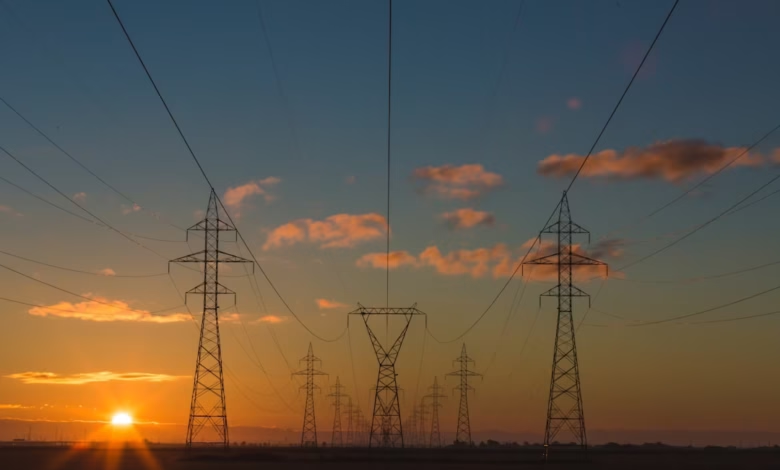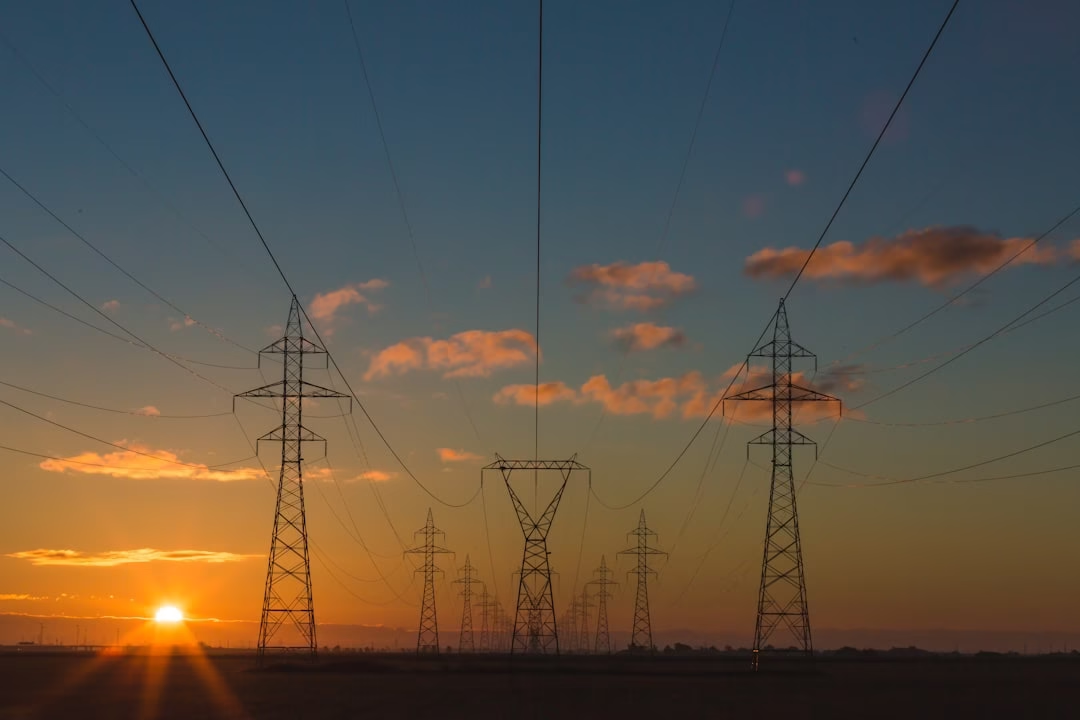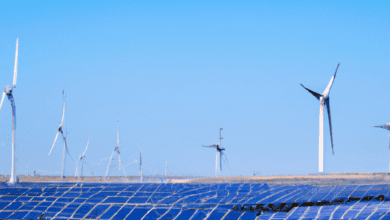Navigating the Future of Energy in Transportation: The Role of Renewable Sources, Electric Vehicles, and Global Trends

As the world grapples with the pressing challenges of climate change and the urgent need for sustainable practices, the transportation sector stands at a pivotal crossroads. Energy in transportation is evolving, moving away from traditional fossil fuels towards more sustainable alternatives. This transition is not only vital for reducing carbon emissions but also essential for enhancing energy security and meeting energy policy goals. In this article, we will delve into the various fuel sources powering vehicles today, including electric vehicles (EVs), biofuels, and the emerging potential of hydrogen energy. We will explore how energy innovations, such as smart grids and energy storage solutions, are transforming energy efficiency within the industry. Furthermore, we will navigate global energy trends, examining the ongoing roles of fossil fuels, nuclear energy, and hydropower in shaping the future of transportation. By understanding these dynamics, we can better appreciate the complex interplay between energy markets, energy R&D, and the necessary investments in green energy that will drive us toward a more sustainable future. Join us as we uncover the myriad possibilities that lie ahead in the quest for cleaner, more efficient energy transportation.
- 1. The Shift Towards Renewable Energy in Transportation: Exploring EVs, Biofuels, and Beyond
- 2. Energy Innovations in Vehicles: How Smart Grids and Energy Storage are Transforming Energy Efficiency
- 3. Navigating Global Energy Trends: The Role of Fossil Fuels, Nuclear Energy, and Hydropower in Transportation's Future
1. The Shift Towards Renewable Energy in Transportation: Exploring EVs, Biofuels, and Beyond
The transportation sector is undergoing a significant transformation as global energy trends shift towards renewable energy sources. This change is driven by a collective response to climate change, energy security concerns, and the need for enhanced energy efficiency. Traditional fossil fuels have long dominated transportation, but the increasing awareness of their environmental impacts has catalyzed a movement towards greener alternatives.
Electric vehicles (EVs) represent one of the most prominent innovations in this energy transition. By utilizing energy from renewable sources such as solar power and wind energy, EVs help to reduce greenhouse gas emissions and dependence on fossil fuels. The integration of smart grids further enhances the efficiency of electric vehicle charging systems, allowing for optimized energy storage and distribution. As energy markets evolve, investments in energy R&D are critical to advancing battery technologies that improve energy storage capabilities for EVs.
In addition to EVs, biofuels are gaining traction as a sustainable alternative to traditional fuels. Bioenergy, derived from organic materials, offers a renewable resource that can significantly reduce carbon emissions in the transportation sector. The production and use of biofuels also align with energy policy goals aimed at promoting energy efficiency and sustainability.
Hydrogen energy is another area of interest in the pursuit of renewable energy in transportation. Hydrogen fuel cells provide a clean energy source that emits only water vapor when generating electricity. This technology is particularly promising for heavy-duty vehicles and can complement existing energy solutions, contributing to a diversified energy transportation landscape.
Moreover, the role of nuclear energy cannot be overlooked, as it provides a stable and low-carbon energy source that can support the electrification of transportation. As countries seek to balance energy imports and exports, nuclear energy may become a pivotal component in achieving energy security and reliability.
As we look towards the future, ongoing innovations in energy technologies, such as thermal energy systems and offshore energy projects, will play a vital role in shaping the transportation sector. Investment in these areas is essential for driving down costs, improving energy efficiency, and facilitating the widespread adoption of renewable energy solutions.
In conclusion, the shift towards renewable energy in transportation is a multi-faceted process that encompasses electric vehicles, biofuels, hydrogen energy, and more. By embracing these energy innovations, we can pave the way for a sustainable transportation system that addresses climate change and promotes energy security while transitioning away from fossil fuels.
2. Energy Innovations in Vehicles: How Smart Grids and Energy Storage are Transforming Energy Efficiency
The transportation sector is undergoing a significant transformation, driven by energy innovations that enhance energy efficiency and sustainability. A crucial component of this transition is the development of smart grids and energy storage technologies, which are reshaping how we harness and distribute renewable energy for vehicles, including electric vehicles (EVs).
Smart grids leverage advanced technology to optimize energy distribution, integrating various energy sources like solar power, wind energy, and hydropower into the grid. By utilizing real-time data and communication technologies, smart grids enhance energy efficiency and enable a more reliable energy supply. This innovation allows for better management of energy resources, reducing reliance on fossil fuels and promoting the use of green energy solutions. As energy markets evolve, smart grids also facilitate the integration of distributed energy resources, enabling consumers to become active participants in energy production and consumption.
Energy storage plays a critical role in this landscape. As we transition to renewable energy, effective energy storage systems are essential for addressing the intermittent nature of sources like solar and wind. Advanced battery technologies, such as lithium-ion batteries, allow for the efficient storage of excess energy produced during peak generation times. This stored energy can then be utilized when demand is high or when generation is low, enhancing energy security and contributing to energy efficiency in transportation. Furthermore, energy storage solutions are pivotal for EVs, enabling longer ranges and faster charging times, thereby accelerating the adoption of electric vehicles.
The combination of smart grids and energy storage systems not only supports the energy transition but also aligns with broader energy policies aimed at reducing carbon emissions and combating climate change. Investments in these technologies are crucial for driving the global energy trends towards a sustainable future. Innovations like hydrogen energy and bioenergy are also gaining traction, offering alternative fuels that can complement existing energy sources and reduce dependence on fossil fuels.
As countries ramp up energy R&D, the focus on enhancing energy efficiency in transportation will become increasingly vital in meeting climate goals and ensuring a stable energy economy. The integration of these innovations will ultimately lead to a more resilient and sustainable energy infrastructure, paving the way for a cleaner and more efficient future in energy transportation.
References:
– International Energy Agency. (2022). Global Energy Trends.
– U.S. Department of Energy. (2023). Energy Innovations and Smart Grids.
– Renewable Energy World. (2023). The Role of Energy Storage in Renewable Energy Integration.
– World Economic Forum. (2023). Energy Policy and the Future of Transportation.
3. Navigating Global Energy Trends: The Role of Fossil Fuels, Nuclear Energy, and Hydropower in Transportation's Future
As the transportation sector evolves, understanding global energy trends becomes crucial for shaping a sustainable future. Fossil fuels have historically dominated the energy landscape, powering vehicles and infrastructure worldwide. However, as concerns about climate change and energy security rise, there is an urgent need to transition to more sustainable energy sources. This transition involves a complex interplay of fossil fuels, nuclear energy, and hydropower, each playing a pivotal role in the future of transportation.
Fossil fuels, while currently the primary energy source for transportation, are facing increasing scrutiny due to their environmental impact. The reliance on oil and gas not only contributes to greenhouse gas emissions, but also affects energy markets and energy policy through fluctuating prices and geopolitical tensions. To achieve energy efficiency and combat climate change, the industry must explore alternatives like bioenergy and hydrogen energy, which offer cleaner options for powering vehicles.
Nuclear energy emerges as a vital part of the energy transition, providing a stable and low-carbon energy source that can complement renewable energy efforts. With advancements in energy R&D, nuclear technology is evolving to ensure safety and efficiency, potentially powering electric vehicles (EVs) through energy storage solutions. This integration could help balance the demand for energy, especially in regions where renewable energy sources like solar power and wind energy are abundant but intermittent.
Hydropower, another key player in the energy transition, contributes significantly to the global energy supply. It offers a reliable and renewable energy source that can support electric vehicle infrastructure and energy transportation systems. By investing in hydropower and other renewable energy projects, countries can enhance their energy security while reducing their dependency on fossil fuels.
The shift towards green energy is not just about adopting new technologies; it also requires smart grids and distributed energy solutions. These innovations will enable more efficient energy management and enhance the resilience of energy systems. Furthermore, carbon capture technologies will play a critical role in mitigating emissions from remaining fossil fuel usage, ensuring that the transition remains viable without abrupt disruptions to energy imports and exports.
In conclusion, navigating global energy trends in transportation involves recognizing the ongoing role of fossil fuels while capitalizing on the potential of nuclear energy and hydropower. By embracing energy innovations and adapting energy policies, the sector can effectively transition towards a more sustainable and secure energy future, ultimately benefiting the environment and the economy.
In conclusion, the landscape of energy in transportation is undergoing a significant transformation driven by the need for sustainable solutions and the urgency of addressing climate change. As we explored, the shift towards renewable energy sources, including electric vehicles (EVs) and biofuels, marks a pivotal moment in energy transition. Innovations such as smart grids and energy storage systems are enhancing energy efficiency, enabling vehicles to harness power from diverse sources and optimize usage.
Additionally, navigating global energy trends reveals a complex interplay between fossil fuels, nuclear energy, hydropower, and emerging alternatives such as hydrogen energy and bioenergy. This multifaceted approach not only strengthens energy security but also supports energy markets' growth and resilience.
As we look ahead, the importance of energy policy and investment in energy R&D cannot be overstated. By prioritizing green energy solutions and advocating for carbon capture technologies, we can pave the way for a more sustainable and economically viable transportation sector. The future of energy transportation is bright, with opportunities for innovation and progress that promise to shape the world’s energy economics for generations to come.
Ultimately, embracing these energy innovations will be critical in ensuring that we meet our energy demands while protecting our planet and its resources. Through collaboration and commitment, we can navigate the evolving energy landscape and contribute to a cleaner, greener future for all.





